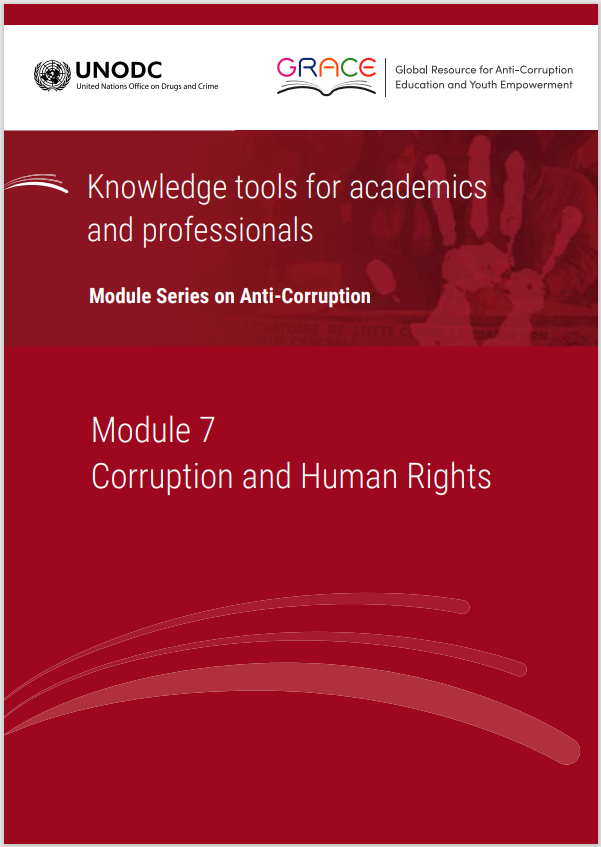This module is a resource for lecturers
Conclusion
By addressing corruption through a human rights framework “the social impact of corruption is made visible; this generates awareness in society about the consequences of this scourge and creates new alliances in the fight against corruption” (UNHRC, 2015, p. 10). Thus, determining whether the consequences of corruption include human rights violations could contribute to a better understanding of the effects of corruption – notably, its human dimension and social implications – and can be an essential step towards making corruption a public issue. In addition, a human rights approach has the potential to result in remedies provided to individual victims, as explained by the United Nations Human Rights Council (2015, p. 10):
[C]riminal prosecution is not … an effective tool for remedying the negative consequences of corruption for the individual, for specific groups or for society in general, since from a human rights perspective, States are required not only to prosecute such crimes but also to take measures to address the negative impact of corruption … In that sense, a human rights perspective to combating corruption and its effects is complementary to the criminal justice.
As with other criminal offences (e.g. torture and unlawful detention), a human rights-based approach along with the criminal justice approach can be mutually reinforcing in the case of corruption. At the same time, some of the risks discussed in this Module must be reduced by ensuring a coordinated approach where anti-corruption and human rights bodies – at the national, international, civil society and private sector level – cooperate effectively to mitigate the harmful impact of corruption on human rights (UNHRC, 2019). Indeed, while recognizing the risks of the human rights-based approach to corruption, it can be argued that these risks are outweighed by the practical benefits of the human rights-based approach to corruption. Peters (2018, p. 1278), for example, makes this argument, explaining that “[o]verall, the infusion of international human rights law into efforts to combat corruption seems apt to complement or bolster the criminalization of corruption and, to that extent, has benign effects” (see also Peters, 2018, p. 1251). Still, the human rights movement and the anti-corruption movement are quite separate, and there has been little dialogue and cooperation between the two to address violations of human rights by corruption.
 Next: References
Next: References
 Back to top
Back to top
